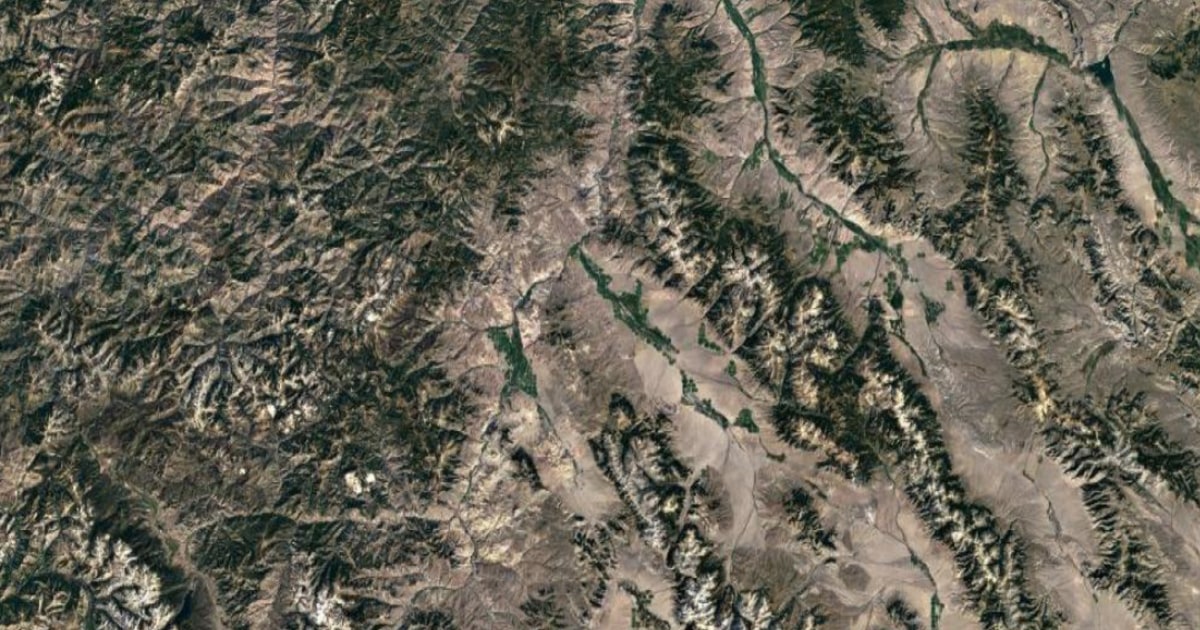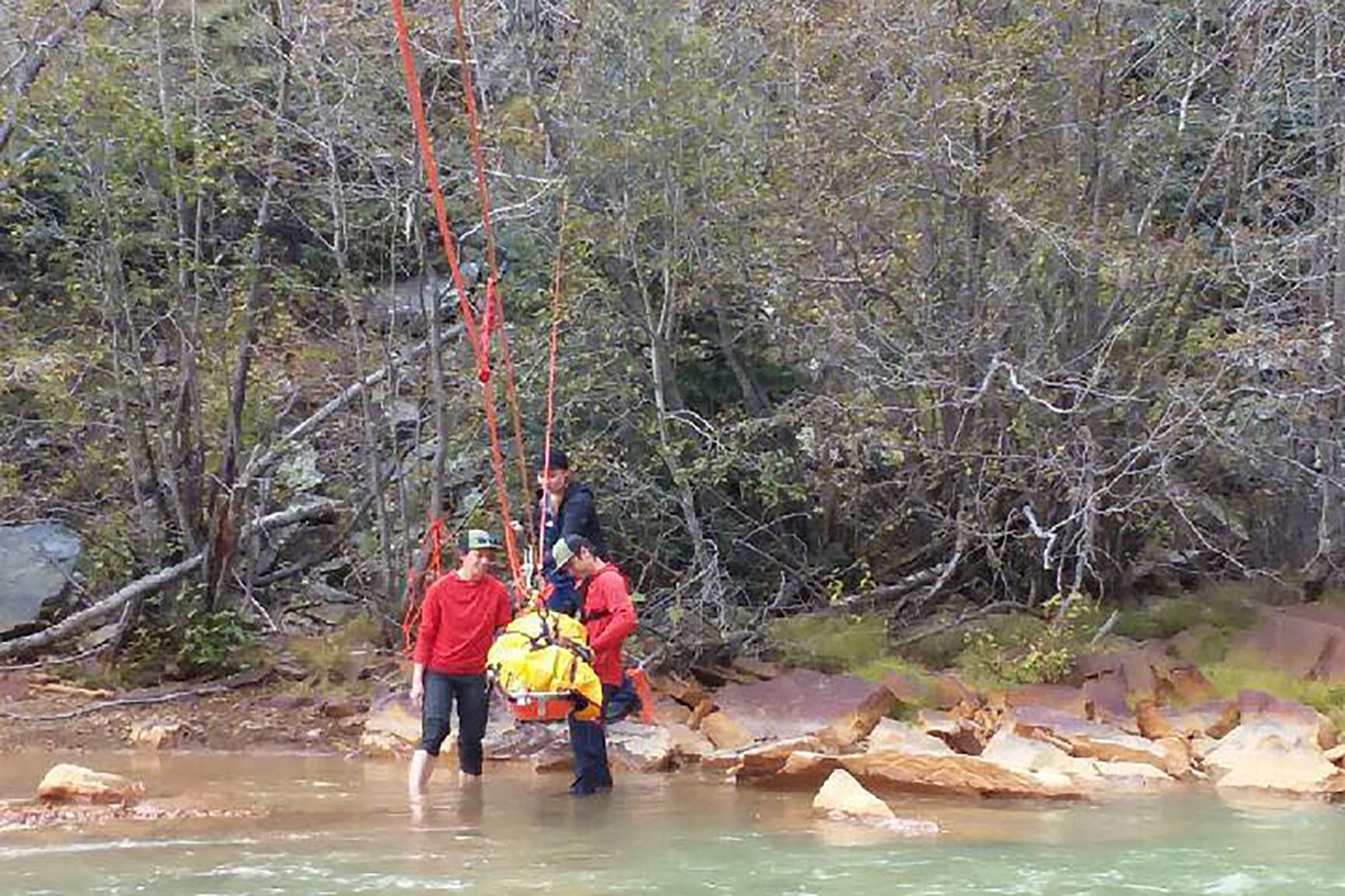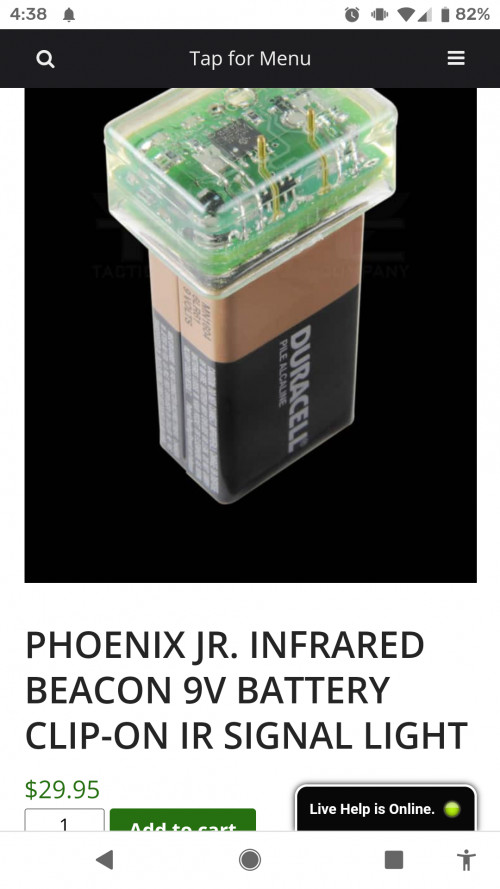Navigation
Install the app
How to install the app on iOS
Follow along with the video below to see how to install our site as a web app on your home screen.
Note: This feature may not be available in some browsers.
More options
You are using an out of date browser. It may not display this or other websites correctly.
You should upgrade or use an alternative browser.
You should upgrade or use an alternative browser.
R
rwc101
Guest
I carry a trauma pack. Should probably add a CAT tourniquet as well.
jbseamus83
Well-known member
So, you're saying he didn't have an Inreach, then..???This one last year was a little wild:

Remains of Idaho hunter missing for 53 years found by another hunter
Raymond Jones went missing while bow hunting in September 1968 and was never seen again. Another bow hunter found his remains last week near the city of Salmon.www.nbcnews.com
Seriously, though, my Zoleo is with me on any trip where I might not have cell service. Even if I'm just driving somewhere because if I get caught in a blizzard or a car wreck in the middle of nowhere, I can contact someone.

Colorado Train Passenger Looks Out Window And Discovers Missing Hiker
A passenger on a Colorado train spotted a missing and injured hiker after looking out the train's window
I have been lucky enough to tech a call that was called in by inreach, a young lady fell off a ledge and fractured her femur, she was lucky that someone with her started down the trail to get help/cell service and they ran into another party that had an inreach. While I am no clairvoyant, I venture to say the few hours time it saved to allow her to get the field was the difference between getting her lifted out and going into hypovolemic shock.
An inreach or it’s equivalent is money well spent.
An inreach or it’s equivalent is money well spent.
I have a SPOT. I don't carry it as often as I should.
A word of warning with those, don't get complacent because you have them. I've seen guys ditch survival gear because they have a device. Even if you hit the magic button it might take a while to get to you. However long it took you to get there is how long it may take them to get to you. Hours or days. Helicopters can't always land anywhere close.
The other thing is carry SOMETHING high vis. We all hunt in camo for a reason. It's hard to spot. I tell all my buddies I carry a roll of pink flagging tape. $3. If I'm mobile I'll leave a trail of pieces. If I'm not I'm wadding it up and throwing out as much as a can. You can make a big very visible mess with a roll of that stuff.
I'm not judging anybody who gets in trouble and doesn't get out. I assume they did everything they could. But I also have seen the other side of a search. Little things that get you noticed make a huge difference.
A word of warning with those, don't get complacent because you have them. I've seen guys ditch survival gear because they have a device. Even if you hit the magic button it might take a while to get to you. However long it took you to get there is how long it may take them to get to you. Hours or days. Helicopters can't always land anywhere close.
The other thing is carry SOMETHING high vis. We all hunt in camo for a reason. It's hard to spot. I tell all my buddies I carry a roll of pink flagging tape. $3. If I'm mobile I'll leave a trail of pieces. If I'm not I'm wadding it up and throwing out as much as a can. You can make a big very visible mess with a roll of that stuff.
I'm not judging anybody who gets in trouble and doesn't get out. I assume they did everything they could. But I also have seen the other side of a search. Little things that get you noticed make a huge difference.
To expand on what @Firedude said about being visible…
My father in law flies a CHP helicopter and covers a good portion of the Sierra mountains. He has done many search and rescues. His words for visibilty: “The easiest thing to see from the air is a large 4’x4’+ bright orange square”
Just think about that one for a second. Not a mirror, not smoke, not waving your arms. Just a big piece of orange fabric.
Second thing he said: “SOS devices make my job a lot easier and people should carry them”.
I carry an inreach mini but also try to limit my risks when hunting. A safer, longer route is my choice over a shorter, dangerous route. For orange, my sleeping bag is probably 4’x6’ opened up. Big fan of black/orange for sleeping bags - visibilty if needed, black to dry it out in the sun.
My father in law flies a CHP helicopter and covers a good portion of the Sierra mountains. He has done many search and rescues. His words for visibilty: “The easiest thing to see from the air is a large 4’x4’+ bright orange square”
Just think about that one for a second. Not a mirror, not smoke, not waving your arms. Just a big piece of orange fabric.
Second thing he said: “SOS devices make my job a lot easier and people should carry them”.
I carry an inreach mini but also try to limit my risks when hunting. A safer, longer route is my choice over a shorter, dangerous route. For orange, my sleeping bag is probably 4’x6’ opened up. Big fan of black/orange for sleeping bags - visibilty if needed, black to dry it out in the sun.
OldBirdDog
New member
New here but thought I would chime in, having done some volunteer SAR work on the west side of the divide in MT. The usual situation is someone is injured and cannot self rescue, they are impaired (dehydration, hypothermia, low-glucose, forgot to take certain prescriptions or doubled up, intoxicated, etc.) to the point that they cannot self rescue, or they get stuck (natural disaster, poor choice in route, etc.) and cannot self rescue.
Some folks carry decent medical gear for trauma and/or medical needs but rarely is it ever easily accessible. A tourniquet is not going to do you much help if it is in the bottom of you pack. Especially if you are separated from it.
A note on the SOS beacons and heli/ambulance evacs and SAR in general. If you have the choice on your SPOT/InReach/communicator of choice (most newer models and account settings allow for this), I recommend having the SOS number set up as a local contact or family member. By default, often these will go to a national deployment team and then dispatched from there to dedicated companies where the heli has to get clearance to go get you. These teams (Lifeflight for example) are for profit and operate just like an ambulance or hospital. Be prepared to pay or have very very good insurance. If your local contact or family member reaches our to the local volunteer SAR, sometimes (not always) there are local private volunteer pilots that can help at little to no cost. That response time is usually much faster as well (take off clearance dependent).
Some folks carry decent medical gear for trauma and/or medical needs but rarely is it ever easily accessible. A tourniquet is not going to do you much help if it is in the bottom of you pack. Especially if you are separated from it.
A note on the SOS beacons and heli/ambulance evacs and SAR in general. If you have the choice on your SPOT/InReach/communicator of choice (most newer models and account settings allow for this), I recommend having the SOS number set up as a local contact or family member. By default, often these will go to a national deployment team and then dispatched from there to dedicated companies where the heli has to get clearance to go get you. These teams (Lifeflight for example) are for profit and operate just like an ambulance or hospital. Be prepared to pay or have very very good insurance. If your local contact or family member reaches our to the local volunteer SAR, sometimes (not always) there are local private volunteer pilots that can help at little to no cost. That response time is usually much faster as well (take off clearance dependent).
GrantK
Well-known member
I'd avoid doing this, if you even can... pretty sure even if you change the SOS contact the national dispatch contractor still gets the call and responds, they send the call to the dispatch center in the county the call originated in, where it typically ends up in the hands of volunteer SAR, probably far faster than if you are relying on your friend to do it... and the dispatch center adds a code so responders can text the device sending the SOS, which your friend cannot... the national dispatch center does not deal directly with private contractors at all to my knowledge. if FFL or a private air contractor is getting contacted it is probably through local SAR because they decided that was a better asset to use...A note on the SOS beacons and heli/ambulance evacs and SAR in general. If you have the choice on your SPOT/InReach/communicator of choice (most newer models and account settings allow for this), I recommend having the SOS number set up as a local contact or family member. By default, often these will go to a national deployment team and then dispatched from there to dedicated companies where the heli has to get clearance to go get you. These teams (Lifeflight for example) are for profit and operate just like an ambulance or hospital. Be prepared to pay or have very very good insurance. If your local contact or family member reaches our to the local volunteer SAR, sometimes (not always) there are local private volunteer pilots that can help at little to no cost. That response time is usually much faster as well (take off clearance dependent).
Speaking as a volunteer SAR tech who has had some unnecessarily epic rescues because people with an inreach thought they were being clever and texting a wife/girlfriend instead of pushing SOS and actually getting the rescue they needed, they ended up almost dying because the correct info was not making it to the SAR team in time for us to reach them, they ended up finally pushing the SOS and getting us an actual position late enough that they were nearly unreachable by the time we were able to locate them... in addition to endangering a bunch of SAR personnel looking for them...
OldBirdDog
New member
Great callout and glad to have a different perspective chime in.I'd avoid doing this, if you even can... pretty sure even if you change the SOS contact the national dispatch contractor still gets the call and responds, they send the call to the dispatch center in the county the call originated in, where it typically ends up in the hands of volunteer SAR, probably far faster than if you are relying on your friend to do it... and the dispatch center adds a code so responders can text the device sending the SOS, which your friend cannot... the national dispatch center does not deal directly with private contractors at all to my knowledge. if FFL or a private air contractor is getting contacted it is probably through local SAR because they decided that was a better asset to use...
Speaking as a volunteer SAR tech who has had some unnecessarily epic rescues because people with an inreach thought they were being clever and texting a wife/girlfriend instead of pushing SOS and actually getting the rescue they needed, they ended up almost dying because the correct info was not making it to the SAR team in time for us to reach them, they ended up finally pushing the SOS and getting us an actual position late enough that they were nearly unreachable by the time we were able to locate them... in addition to endangering a bunch of SAR personnel looking for them...
NativeIndian
Active member
- Joined
- Jan 28, 2021
- Messages
- 172
Mine is always clipped to my shoulder strap. MR has a nice little spot for it to clip onto.There's about a 15% chance my InReach makes it into my pack on any given hunt. Need to work on that.
Similar threads
- Replies
- 66
- Views
- 4K





